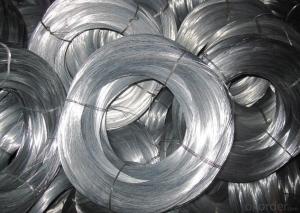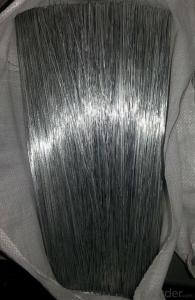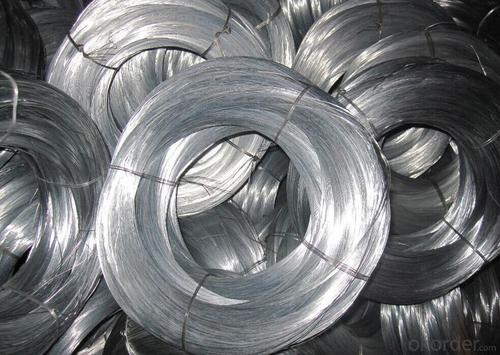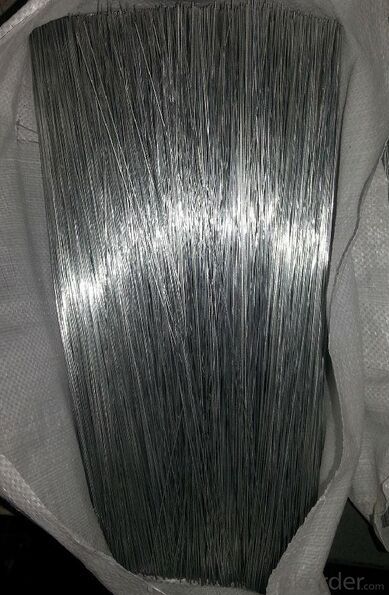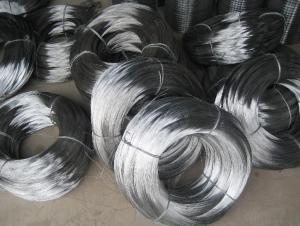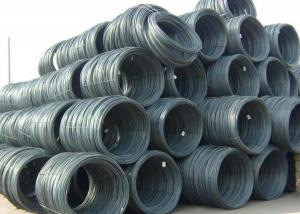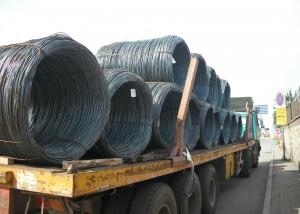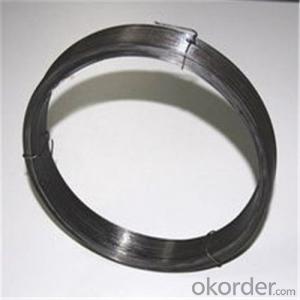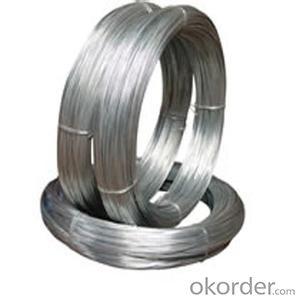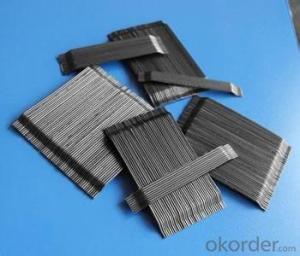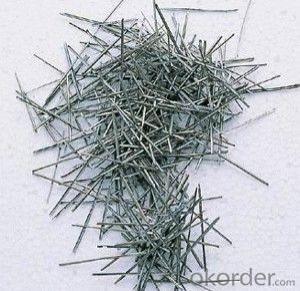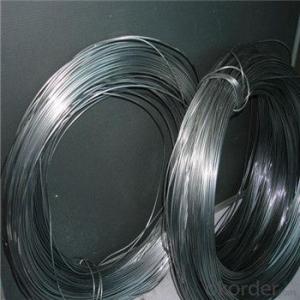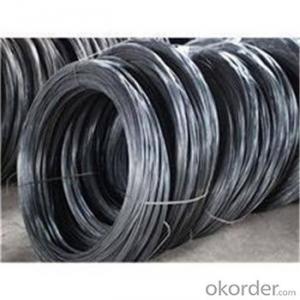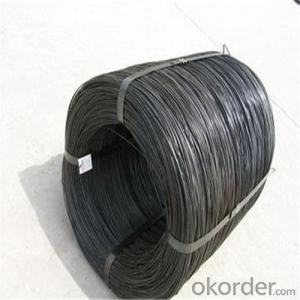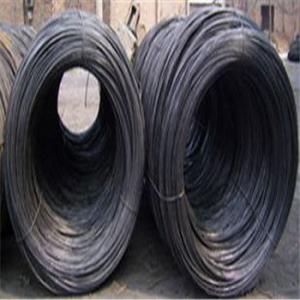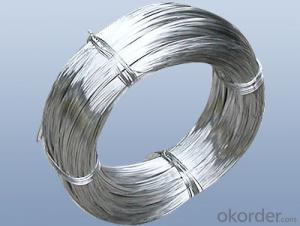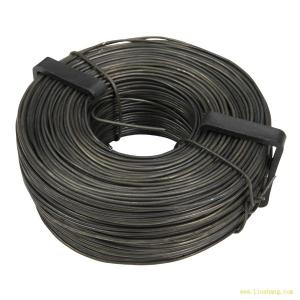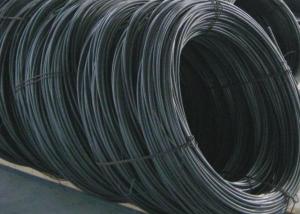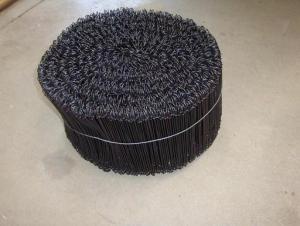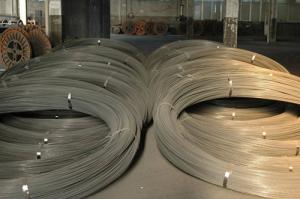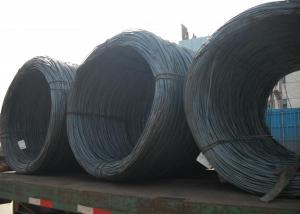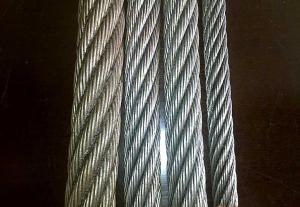Bare Aluminium Annealed Binding Wire Tie Wire Price
- Loading Port:
- Tianjin
- Payment Terms:
- TT OR LC
- Min Order Qty:
- 5 m.t.
- Supply Capability:
- 50000 m.t./month
OKorder Service Pledge
OKorder Financial Service
You Might Also Like
Specification
Bare Aluminium Annealed Binding Wire Tie Wire Price
Aluminum annealed binding wire.
Wire Guage: 1SWG~19SWG
Diameter: 1mm~5.9mm
Type: Bare
1. Application
This product is used as hanging cable, drawing cable and installation for field line, electric appliances and instruments, electronic equipment and automatic devices for electric power, chemical and so on. It is specially soft, easily folded and movable, smooth and aging resistant, high pulse staring current resistant.
2. Standard
BS 6500, BS 6004, BS 6360, BS EN 50363, IEC 60227, DIN VDE 0281.
3. Specification
450/750V PVC Insulation building wire to BS 6360
Single Core PVC Insulated
| Size of conductor | Nominal thickness of insulation mm | Mean overall diameter Upper limit mm | Approx. net weight per km kg | |
| Nominal cross-sectional area mm2 | Number and diameter of wires no./mm | |||
| 1.0 | 1/1.13 | 0.6 | 2.8 | 14 |
| 1.5 | 1/1.38 | 0.7 | 3.3 | 20 |
| 1.5 | 7/0.50 | 0.7 | 3.4 | 20 |
| 2.5 | 1/1.78 | 0.8 | 3.9 | 33 |
| 2.5 | 7/0.67 | 0.8 | 4.2 | 34 |
| 4 | 1/2.25 | 0.8 | 4.4 | 51 |
| 4 | 7/0.85 | 0.8 | 4.8 | 51 |
| 6 | 1/2.76 | 0.8 | 4.9 | 67 |
| 6 | 7/1.04 | 0.8 | 5.4 | 71 |
| 10 | 1/3.57 | 1.0 | 6.4 | 110 |
| 10 | 7/1.35 | 1.0 | 6.8 | 120 |
| 16 | 1/4.50 | 1.0 | 7.3 | 170 |
| 16 | 7/1.70 | 1.0 | 8.0 | 180 |
| 25 | 7/2.14 | 1.2 | 9.8 | 285 |
| 35 | 19/1.53 | 1.2 | 11.0 | 380 |
| 50 | 19/1.78 | 1.4 | 13.0 | 510 |
| 70 | 19/2.14 | 1.4 | 15.0 | 715 |
| 95 | 19/2.52 | 1.6 | 17.0 | 990 |
| 120 | 37/2.03 | 1.6 | 19.0 | 1230 |
| 150 | 37/2.25 | 1.8 | 21.0 | 1510 |
| 185 | 37/2.52 | 2.0 | 23.5 | 1900 |
| 240 | 61/2.25 | 2.2 | 26.5 | 2490 |
| 300 | 61/2.52 | 2.4 | 29.5 | 3050 |
| 400 | 61/2.85 | 2.6 | 33.5 | 3900 |
| 500 | 61/3.20 | 2.8 | 37.0 | 4880 |
450/750V PVC Insulated (Non-Sheathed) Flexible Conductor General Purpose Cables to BS 6004
Single Core PVC Insulated
| Size of conductor | Nominal thickness of insulation mm | Mean overall diameter Upper limit mm | Approx.net weight per km kg | |
| Nominal cross-sectional area mm2 | Number and diameter of wires no./mm | |||
| 1.0 | 32/0.20 | 0.6 | 3.0 | 16 |
| 1.5 | 30/0.25 | 0.7 | 3.5 | 21 |
| 2.5 | 50/0.25 | 0.8 | 4.2 | 33 |
| 4 | 56/0.30 | 0.8 | 4.8 | 50 |
| 6 | 84/0.30 | 0.8 | 6.3 | 70 |
| 10 | 80/0.40 | 1.0 | 7.6 | 120 |
| 16 | 126/0.40 | 1.0 | 8.8 | 175 |
| 25 | 196/0.40 | 1.2 | 11.0 | 290 |
| 35 | 276/0.40 | 1.2 | 12.5 | 400 |
| 50 | 396/0.40 | 1.4 | 14.5 | 565 |
| 70 | 360/0.50 | 1.4 | 17.0 | 770 |
| 95 | 475/0.50 | 1.6 | 19.0 | 1010 |
| 120 | 608/0.50 | 1.6 | 21.0 | 1260 |
| 150 | 756/0.50 | 1.8 | 23.5 | 1580 |
| 185 | 925/0.50 | 2.0 | 26.0 | 1900 |
| 240 | 1221/0.50 | 2.2 | 29.5 | 2500 |
Reference No 6192y
Flat Twin wire BVVB
| Size of conductor | Nominal thickness of insulation mm | Nominal thickness of sheath mm | Mean overall dimensions | Approx. net weight per km kg | ||
| Nominal cross-sectional area mm2 | Number and diameter of wires mm | Lower limit mm | Upper limit mm | |||
| 1.0 | 1/1.13 | 0.6 | 0.9 | 4.0*6.2 | 4.7*7.4 | 55 |
| 1.5 | 1/1.38 | 0.7 | 0.9 | 4.4*7.0 | 5.4*8.4 | 70 |
| 2.5 | 1/1.78 | 0.8 | 1.0 | 5.2*8.4 | 6.2*9.8 | 105 |
| 4 | 7/0.85 | 0.8 | 1.0 | 5.6*9.6 | 7.2*11.5 | 150 |
| 6 | 7/1.04 | 0.8 | 1.1 | 6.4*10.5 | 8.0*13.0 | 205 |
| 10 | 7/1.35 | 1.0 | 1.2 | 7.8*13.0 | 9.6*16.0 | 325 |
| 16 | 7/1.70 | 1.0 | 1.3 | 9.0*15.5 | 11.0*18.5 | 465 |
Reference No 6242y
Flat-Twin with Bare Earth-continuity Conductor
| Size of conductor | Nominal thickness of insulation mm | Size of earth conductivity conductor no./mm | Nominal thickness of sheath mm | Mean overall dimensions | Approx. net weight per km kg | ||
| Nominal cross- sectional area mm2 | Number and diameter of wires mm | Lower limit mm | Upper limit mm | ||||
| 1.0 | 1/1.13 | 0.6 | 1/1.13 | 0.9 | 4.0*7.2 | 4.7*8.6 | 70 |
| 1.5 | 1/1.38 | 0.7 | 1/1.13 | 0.9 | 4.4*8.2 | 5.4*9.6 | 85 |
| 2.5 | 1/1.78 | 0.8 | 1/1.13 | 1.0 | 5.2*9.4 | 6.2*11.0 | 120 |
| 4 | 7/0.85 | 0.8 | 1/1.38 | 1.0 | 5.6*10.5 | 7.2*13.0 | 175 |
| 6 | 7/1.04 | 0.8 | 1/1.78 | 1.1 | 6.4*12.5 | 8.0*15.0 | 240 |
| 10 | 7/1.35 | 1.0 | 7/0.85 | 1.2 | 7.8*15.5 | 9.6*19.0 | 390 |
| 16 | 7/1.70 | 1.0 | 7/1.04 | 1.3 | 9.0*18 | 11.0*22.0 | 560 |
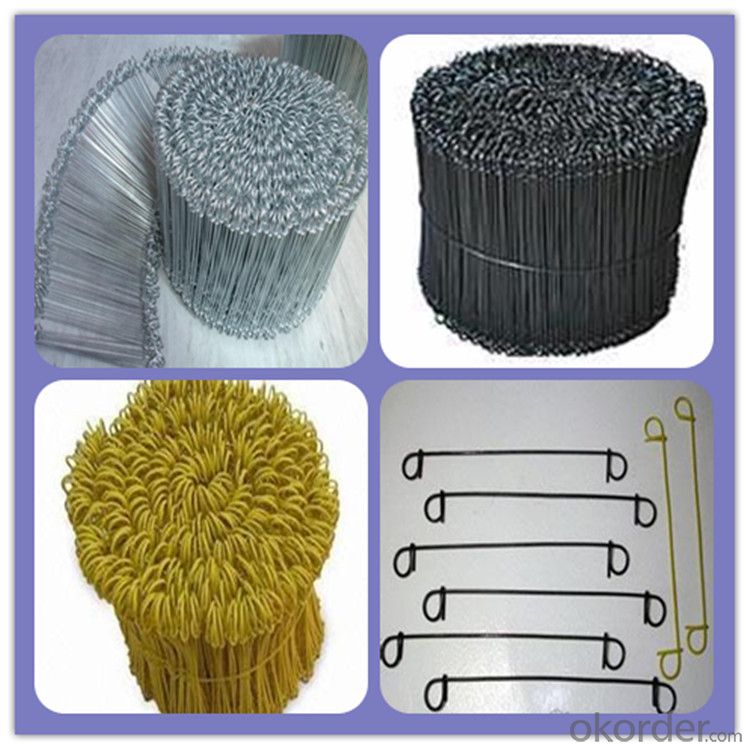
Factory photos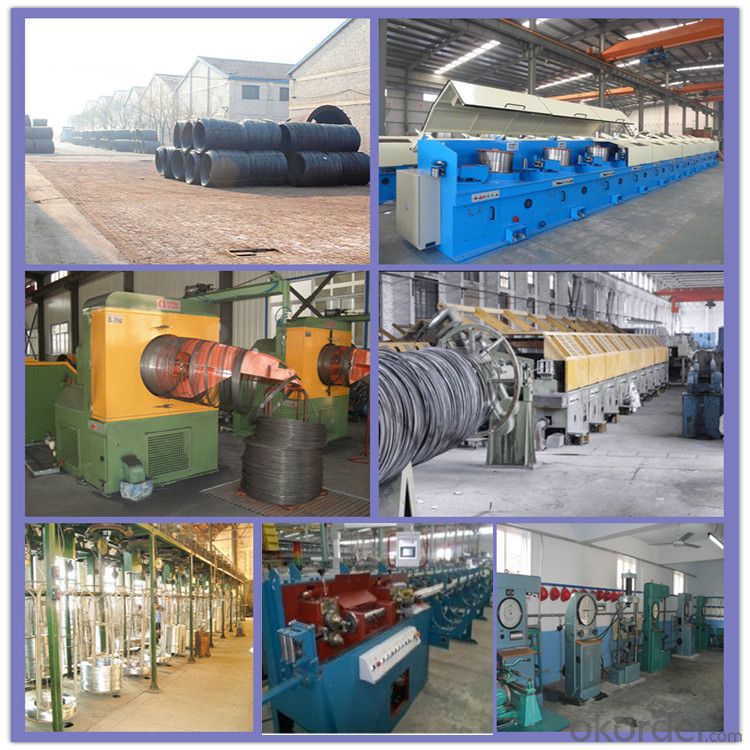
- Q: My father changed out a 3 prong plug to a 4 prong plug and crossed the wires by mistake. So the red wire on the plug was connected to the black wire to the dryer and visa-verse. What would happen to the dryer if it is turned on with these wires crossed? Consequently, my dryer's motor is not responding, however the heating element is working. Was there a short? Did the motor get fired?
- My first question is did he run a new line ? With the old three prong, there was only three wires. There shall be four wires to use a four prong. So, if he didn't and plugged in the dryer in, any warranty is null and void. As far as the black and red being crossed, no it does not matter with these two wires.
- Q: I am moving a stove that has four wires - bare copper (ground), red, white, and black.The location I am putting it in only has three wires - red, white, and black.Can I just ignore the ground on the new location since it doesn't have one? Or should I cross one of the other wires with the ground?
- Your four-wire stove has a terminal where you can connect the bare/green and white wires together, most have a jumper to connect the two terminals. You don't want to leave any wires unconnected. The other two wires (red black) are connected the same way between 3-wire and 4-wire units. You'll have to buy a 3-wire cable for your stove to plug it into the 3-wire receptacle. The new code requires 4-wire connections. The bare/green wire and the white neutral wire are run back to the circuit breaker panel separately at which point the are connected together on a buss bar.
- Q: I dont understand it I am trying to get a 1ohm load on a 2ohm dvc speaker but cant figure out how to tell if the wire you connect in the postive terminal on the sub in a neg wire or positive how do you tell what the gray line is on this diagram positive or negetive and how to tell. thanks
- You are wiring the sub in parallel. from the positive terminal of the amp you connect both positive terminals of the sub, and Viceversa for the negative. The wire is either positive or negative depending on which terminal it touched. Make sure your amp can handle an impedance of 1 ohm.
- Q: trying to find the radio wiring diagram for my suburban to find out where all my speaker wires are .
- 1994 Chevrolet Suburban Car Stereo Radio Wiring Diagram Radio Constant 12V+ Wire: Orange Radio Ignition Switched 12V+ Wire: Yellow Radio Ground Wire: Black Radio Illumination Wire: Gray Radio Dimmer Wire: Brown Radio Antenna Trigger Wire: N/A Radio Amplifier Trigger Wire: N/A Front Speakers Size: 6 1/2″ Speakers Front Speakers Location: Doors Left Front Speaker Wire (+): Tan Left Front Speaker Wire (-): Gray Right Front Speaker Wire (+): Light Green Right Front Speaker Wire (-): Dark Green Rear Speakers Size: 6 1/2″ Speakers Rear Speakers Location: Rear Doors Left Rear Speaker Wire (+): Brown Left Rear Speaker Wire (-): Yellow Right Rear Speaker Wire (+): Dark Blue Right Rear Speaker Wire (-): Light Blue
- Q: Wire 1 and wire 2 are made from the same metal. Wire 2 has a larger diameter than wire 1. The electric field strengths E1 and E2 are equal. A) Compare the values of the two current densities. Is J1 greater than, less, or equal to J2?B) Compare the values of the currents I1 and I2. Is I1 greater then, less or equal to I2?
- The current will be more dense in the smaller wire. The value of the current is inversely proportional to the resistiance of the wire. Resistance = resistivity * length / Area since the wires are of identical material and length, the only thing left to vary is the cross-sectional area. Area is proportional to the square of the radius (diameter), so the current will be proportional to the square of the diameter. I2 is proportional to I1^2 I2 is larger than I1 .
- Q: I have a wire coming from the car battery positive terminal. It is 12v DC. I want to split this wire to two other wires. I cannot connect another wire to the positive terminal. Will splitting this wire cause the voltage to drop to 6v each wire? or will they pull a constant 12v each?
- No, each will carry 12v. I wouldn't advise physically splitting the wire though - you loose the insulation which is dangerous and you reduce the size of the wire which means that it may not be suitable for high current and could melt.
- Q: i need to make a battery powered light bulb and i have copper wire at home...will it work?
- Copper wire is rather orange in color. If it is insulated it will be surrounded by a coating of plastic for its entire length. If you cut it and then look at its end the copper wire should be in the middle with the insulation around it like a doughnut. Insulation can be of any color and is not always plastic. The copper wire itself can be either solid and made up of a single strand, or stranded and thus composed of numerous much smaller diameter strands. Stranded wire is more flexible and is the type used commonly for lamps, but sold copper wire, although stiffer, will work as well.
- Q: what to do if i unhooked my starter without unhooking my battery and the hot and gound wire caught on fire
- first always disconnect the battery. 2nd replace all the burnt wiring. 3rd. make sure you get all the burnt wires. check the wires going to the starter relay also. 4th. do not mess with anything electrical on the vehicle without disconnecting the battery. ect.. alt. starter. batt. and so on.
- Q: i want to now which is the live wire and which is nuteral thank you
- Black is hot , white is nuetral , green is ground
- Q: can someone tell me what wire arcing is?
- A very complex subject! Generally, the arc itself is a small area of plasma between to conductors at different potentials.. If the wires never touch, a high potential/voltage is required to get it started. Once initiated, the voltage across the arc becomes quite low (around 20V) even at high currents. There are many other interesting features like the arc impedance has an area of negative differential resistance. Arcs in house wiring are categorized into to camps. These are series arcs and paralell arcs. Series arcs are those that are in series with the load. They happen when a wire breaks and starts to separate. As the wire pulls apart the arc strikes and a plasma is initiated. These arcs are low in current (below the breaker's rating) and will not be detected by the circuit breaker. They can persist for a long time just sizzling away and can start fires. Parallel arcs are when the line and return wires have insulation failure and short together. They tend to have very high currents and quickly either blow themselves open or go to a 'bolted' fault (hard short circuit) and trip the breaker. They too can start fires in spectacular fashion. As I said, its very complex and I could go on for pages ... I worked on arc research for a number of years trying to devise ways of detecting arcs back at the circuit breaker box using current and voltage signatures. It should also be mentioned that arcs act very differently with AC voltage verses DC voltage. AC arcs tend to extinguish at the 60Hz crossovers (when the current is zero) and must be restruck each cycle. Because of arcs, and recent research, you will now find special circuit breakers on the shelf at your local hardware store that have extra capabilities related to detecting arcs. If there is a specific question that you have regarding arcs, post more details or send me an email.
Send your message to us
Bare Aluminium Annealed Binding Wire Tie Wire Price
- Loading Port:
- Tianjin
- Payment Terms:
- TT OR LC
- Min Order Qty:
- 5 m.t.
- Supply Capability:
- 50000 m.t./month
OKorder Service Pledge
OKorder Financial Service
Similar products
Hot products
Hot Searches
